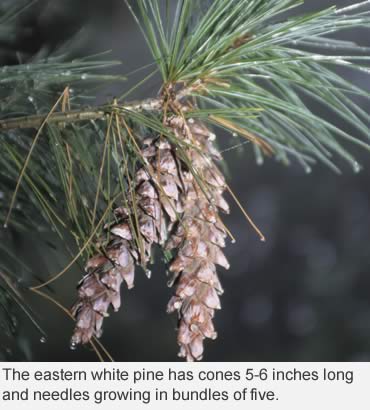Hot or cold, you often can find whitetails looking for food and shelter in the evergreens.
For many years, members of our deer camp would depart for their stands in the predawn darkness with this promise: “See you in the pines at noon.”
There, a spring bubbled from mossy rocks, forming a clear, shallow pool, which provided water for tea and soup. The first to arrive would gather sticks and dry limbs to start a small piney fire, which, by the time other deer campers arrived, glowed orange and spit tiny embers. One by one, they drifted in, warmed their hands and toasted their sandwiches while pressed against the trunks of the pines and sharing with one another their observations and plans.
Our opening-day meetings — always called to order in the pines — became a cherished deer camp tradition. However, no one ever seemed to notice that the convention site was actually a thick stand of mature eastern hemlocks with only a handful of white pines present. It’s understandable, I suppose, that any tree holding needles and cones will sooner or later be generically identified as a pine.
Deer hunters who spend much time in the winter woods sooner or later become familiar with conifers, particularly the pines, 90 or so species of which inhabit North America. Along with hemlocks, spruces, firs, cedars and other evergreens, mature pine woods serve as underrated seasonal habitat for both deer and deer hunters.
Aromatic Food and Cover
Most conifers provide little more than midwinter starvation foods. More than one deer has been found dead with its paunch chock full of indigestible needles. A notable exception is the northern white cedar and, to a far lesser extent, white pine and eastern hemlock. Neither is as beneficial as white cedar, however. Wherever cedar groves are found, deer will reap benefits as a food source (feasting on the aromatic foliage) and as refuge from the summer’s heat and winter’s chill.
I’ve always thought it ironic that the same white cedar devoured by deer in isolated backcountry habitat is also attractive to suburban whitetails living on the edges of towns, much to the frustration of landscapers and homeowners. In suburbia, the cultivated shrubs and trees of white cedars are known as arborvitae, the Tree of Life.
So beneficial is the aromatic white cedar that it’s often cut as deer browse during severe winters in places like New England, the Great Lakes states and southeastern Canada. According to John Ozoga in “Whitetail Winter” (Willow Creek Press; 1995), “clear-cutting an acre of mature white cedar swamp yields around 5,000 pounds of nutritious browse, enough to feed 10 to 15 deer for a 100-day winter period.”
 Year-Round Benefits
Year-Round Benefits
Mature stands of firs, spruces, hemlocks and pines also serve some year-round needs of deer. Old growth evergreens forming dense canopies function as sun blockers and air conditioners in the heat of summer and as radiant heat traps in winter. Any such evergreen shelter near farmland or deciduous woodlands (where other food sources may be available) should never be ignored by the late season or foul-weather hunter.
A variety of conifers offer prime cold season habitat, particularly during frigid days and in rain, wind or snow. More than once I’ve taken foul-weather refuge on whitetail hunts by dropping into a pine bottom or setting up in some protected ridge thick with mature spruces, hemlocks or white pines.
Deep winter and severe storms aren’t the only times deer and other wildlife utilize conifer stands. The passing of a weather front with high winds will often drive nervous whitetails into the protection of evergreens. It’s in the depths of winter, usually after hunting season has ended or snow hinders deer movement, that whitetails retreat to these microclimates and stay for days or weeks to save energy.
Studies show that the average winter temperature in a conifer bottom is a bit higher than in adjacent deciduous woodlands. The dark trunks of closely spaced conifers radiate heat absorbed on sunny days, and the heavily-foliated treetops serve as protective lids, catching snow, trapping radiation and breaking the force of bitter winds.
Researchers have determined that a mature stand of white cedar with its flattened branchlets, for example, will cut wind chill as much as 25 times more efficiently than in surrounding mixed conifers and deciduous hardwoods and as much as 200 times better than in open uplands and crop fields.
On frigid February nights, as wind slices through “the pines,” whitetails tuck their legs and nestle into the drifting snow, awaiting the promise of a milder tomorrow and the eventual dawn of spring.
This article was published in the October 2006 edition of Buckmasters Whitetail Magazine. Join today to have Buckmasters delivered to your home.